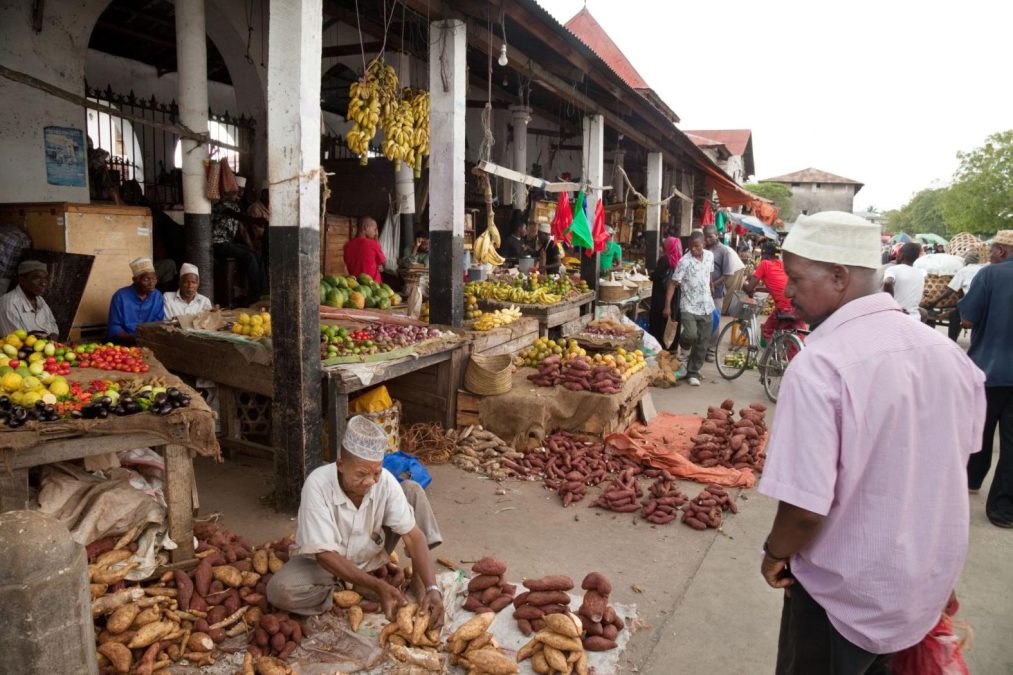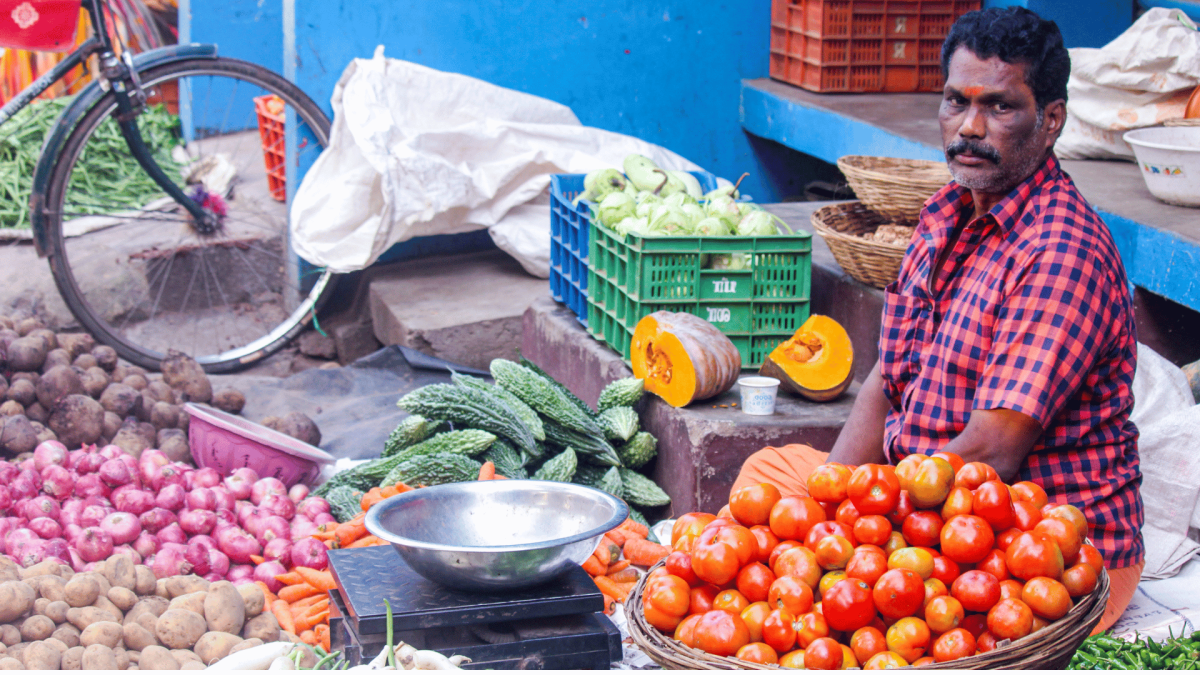Food has long been absent from UN climate summits — a major oversight given food systems’ vast interconnections with the climate. COP28 in Dubai righted this wrong with a series of breakthroughs at the nexus between food systems, food and nutrition security, agriculture and climate.
Food and land use drive one-third of global greenhouse gas emissions. At the same time, food systems around the world are particularly vulnerable to droughts, flooding, extreme heat and other escalating impacts of climate change. The issue is particularly critical in many developing countries — for example, in Brazil, where food and land use drive 70 per cent of emissions while over half the population remains food insecure.
How the world produces and consumes food also has a large bearing on its ability to end deforestation and slash methane emissions by 2030, both of which will be essential to meeting global climate targets.
Indeed, this was the COP when food finally took its place as central to the climate effort with at least six notable outcomes that could drive transformational change in the sector:
1) More than 150 countries signed the COP28 UAE declaration on sustainable agriculture, resilient food systems and climate action
At COP28, 159 world leaders endorsed the COP28 UAE Declaration on Sustainable Agriculture, Resilient Food Systems and Climate Action. Together their nations represent 68 per cent (530 million) of the world’s farmers, 75 per cent of the global population, 77 per cent of global food production, 81 per cent of the world’s arable land, 83 per cent of global emissions from the food system and 83 per cent of the world’s agricultural GDP.
The Declaration commits these nations to scale up adaptation and resilience for farmers, fishers and food producers; to promote food security and nutrition through social protection systems, school feeding programs and more; and to support workers in agriculture and food systems to maintain inclusive, decent work.

Critically, it includes an explicit call for nations to strengthen the integrated management of water in agriculture and food systems at all levels to ensure sustainability. It also emphasises the need to maximise the climate and environmental benefits associated with agriculture and food systems while containing and reducing harmful impacts, such as by sustainably boosting productivity, protecting and restoring land and natural ecosystems, enhancing soil health and biodiversity, and shifting from higher greenhouse gas emitting practices to more sustainable production and consumption. This includes reducing food loss and waste and promoting sustainable aquatic “blue foods.”
The Declaration further commits nations, by 2025, to:
- Integrate agriculture and food systems into their national climate plans, known as “Nationally Determined Contributions” (NDCs), as well as national adaptation and biodiversity plans and long-term climate strategies.
- Revisit and reorient policies and government support — including the $700 billion of agricultural subsidies the world spends every year — towards practices which reduce greenhouse gas emissions, bolster resilience and human, animal and ecosystem health, and reduce ecosystem loss and degradation.
- Scale up and enhance access to all forms of finance in food systems, including finance for smallholder farmers.
- Increase investment in science and innovation, including innovations arising from local and Indigenous communities.
- Strengthen the multilateral trade system in support of the goals of the Declaration.
The Declaration concludes with a commitment by nations to bring their relevant ministries — including ministries of agriculture, health, climate, environment, energy and finance — together to discuss these goals and to report back on their progress at COP29. A Declaration of this character, while not legally binding, sends a powerful signal. It was one of the lead stories from COP28, received widespread international press coverage, and has been heralded as one of the most significant positive outcomes of the meeting.
2) Food appeared in the global stocktake and global goal on adaptation
The first-ever Global Stocktake — which assessed the world’s progress on climate action to date and set a roadmap for the future — was agreed by nations at the conclusion of COP28. The Stocktake outcome sent a signal that food is now vital to the global response to climate change, including an echo of the Paris Agreement in its preamble which recognises “the fundamental priority of safeguarding food security and ending hunger, and the particular vulnerabilities of food production systems to the adverse impacts of climate change.”
But there is much work still to be done to bring food and food systems into the heart of governments’ efforts, and to a level commensurate with the signal sent by the COP28 UAE Declaration.
Paragraphs 55 and 63(b) in the adaptation section of the Stocktake outcome are welcome steps forward, calling for the “implementation of integrated, multi-sectoral solutions, such as land use management, sustainable agriculture, resilient food systems,” and for “climate-resilient food and agricultural production and supply and distribution of food, as well as increasing sustainable and regenerative production and equitable access to adequate food and nutrition for all.” While it is unfortunate there is no explicit reference to food systems in the mitigation section, paragraphs 33 to 36 — covering nature, ecosystems, oceans, and sustainable lifestyles and sustainable patterns of consumption and production — are nevertheless directly relevant to food and land use.
The Global Goal on Adaptation text also sets a target for “attaining climate-resilient food and agricultural production and supply and distribution of food,” which could help drive further focus on food systems and adaptation in the future. This is especially important since only 0.8 per cent of all climate finance is currently being focused on small-scale agri-food systems, leaving smallholder farmers particularly exposed and vulnerable to the effects of a changing climate.
3) The Alliance of Champions for Food Systems Transformation (ACF) was launched
COP28’s Food, Agriculture and Water Day on December 10, 2023 saw the launch of an Alliance of Champions for Food Systems Transformation (ACF). This high-ambition coalition on food, led by Norway, Brazil, Sierra Leone, Rwanda and Cambodia, aims to drive ambitious implementation of the food systems agenda in those countries, working across ten priority intervention areas. These range from enhancing the resilience and sustainability of food systems to improving the livelihoods of food producers and increasing affordability for consumers. The Alliance will also form a bloc of progressive nations calling for faster progress and ambition in the multilateral context, including in the way nations take forward their response to the Global Stocktake.
If the Declaration sets a floor for all signatory nations, ACF sets the ceiling — a ‘north star’ for action to which all countries can aspire. For a long time, the world has lacked such a high-ambition coalition for food systems, akin to others on mitigation, coal, oil and gas and nature. Now that has changed.
4) FAO released its global roadmap
The UN’s Food and Agriculture Organization (FAO) released a roadmap at COP28 for transforming food systems to both limit global temperature rise to 1.5 degrees C (2.7 degrees F) — the threshold scientists say can avert the worst impacts of climate change — and to end hunger in line with UN Sustainable Development Goal 2.
The FAO roadmap sets out a broad range of options, including the need to sustainably boost crop and livestock yields; reduce agricultural greenhouse gas emissions and build resilience; reduce food loss and waste; and shift diets in rich countries away from meat and towards plant-based foods — all amidst a changing climate and a continuing biodiversity crisis.

This roadmap is a significant development. It complements WRI’s flagship World Resources Report: Creating a Sustainable Food Future and the Food and Land Use Coalition’s Growing Better report, which lay out a menu of solutions from farm to fork for achieving global food security and climate goals. With the promise of further instalments in 2024, the FAO roadmap has the potential to become a guide for climate-friendly food systems, similar to the IEA Net Zero Roadmap to 2050 in the energy sector.
5) Non-state actors committed to act post-COP28
Over 200 non-state actors — from companies to cities, farmers and Indigenous Peoples — committed to act on food systems in a Call to Action facilitated by the UN Climate Change High-Level Champions, a group of influential climate voices first established at COP21 in Paris. This was a striking affirmation from a widespread community of actors and a corollary to the COP28 UAE Declaration signed by world leaders. Importantly, some of the world’s largest companies committed to source sustainably produced commodities from 160 million hectares of land across supply chains amounting to $2.2 billion of investment.
6) More finance was promised
Finally, governments, foundations and others committed financial support for sustainable food systems. This included $519 million from the UAE, the Bill and Melinda Gates Foundation, the Bezos Earth Fund and others. These funds are destined for the next phase of the CGIAR — a global agricultural research consortium based in Rome — as well as for investments in reducing emissions from livestock and food loss and waste.
These and other funding commitments were a significant signal that governments and the philanthropic sector would support the food and climate agenda. A Technical Cooperation Collaborative (TCC) involving many key agencies, such as FAO and the World Bank, also committed to coordinating their support in partner countries, including those that had signed the Declaration.
What comes next?
The sum of the achievements on food and climate at COP28 now rests on the urgency and transparency of delivery. Nations, companies, philanthropies and other actors will be held to account for the strength of what they achieve against their commitments in time for COP29 in Azerbaijan in 2024 and COP30 in Brazil in 2025.
Here are some key areas to watch for progress over the next year:
- Will developed countries reform their agricultural policy and subsidy regimes to deliver on the goals of the Declaration? For example, will the next European Commission reform the Common Agricultural Policy to deliver enhanced outcomes for people, climate and nature, and enact a Sustainable Food Systems Framework? Will the climate and farming provisions in the United States’ Inflation Reduction Act be implemented over the years ahead, beyond the next national election?
- Will China’s 14th and 15th Five-Year Plans — which set out the country’s national development policies — incorporate food, food systems and agriculture more fully into their vision?
- Will Brazil continue on its current trajectory of reduced deforestation and ecosystem conversion, coupled with enhanced agricultural productivity?
- Will elections in countries as diverse as the UK, Indonesia, Mexico and India over the next two years see renewed and consistent policy commitments and signals on food and land use?
- Will the 159 nations that endorsed the Declaration include food and land use in their next NDCs, whether as a means of driving mitigation, ensuring adaptation and resilience, or both?
- Will these updated NDCs drive significant action and measurable progress by 2030?
- Will these nations’ climate plans go beyond measures focused on agriculture and land use to include wider food system actions, including reducing food loss and waste and shifts to healthier and more sustainable diets?
- Will wealthier nations provide funding to poorer nations at scale to support them in achieving a just rural transition and greater resilience for smallholder farmers?
- Will the Loss and Damage fund established at COP be channelled in part to losses and damages experienced in the food system?
- Will the philanthropic foundations already committed to action on food and food systems move with speed to disburse funding for critical actions consistent with the outcomes from COP28? And will new philanthropies come on board in support?
- Will the World Trade Organization (WTO) reopen and advance its negotiations on agriculture in ways which prevent hoarding and protectionism and which instead drive equity, resilience and a greater level playing field for farmers committed to more sustainable practices?
- Will the countries of the newly formed Alliance of Champions move to drive rapid progress at home, as well as act diplomatically to spur greater action on the food agenda within the UNFCCC as well as the G7 and G20?
- Will companies deliver on their commitments to address deforestation and shift to more sustainable sourcing of commodities by 2025?
- Will societies as a whole — including farmers, consumers, the private sector, government officials and political leaders — rally to deliver lasting movements for change in food systems, consistent with the spirit of the declarations signed at COP28?
In summary, COP28 saw long-awaited and substantial progress on food and climate. Now, it is the world’s collective responsibility to deliver on these promises and to ensure that this truly is a turning point.



